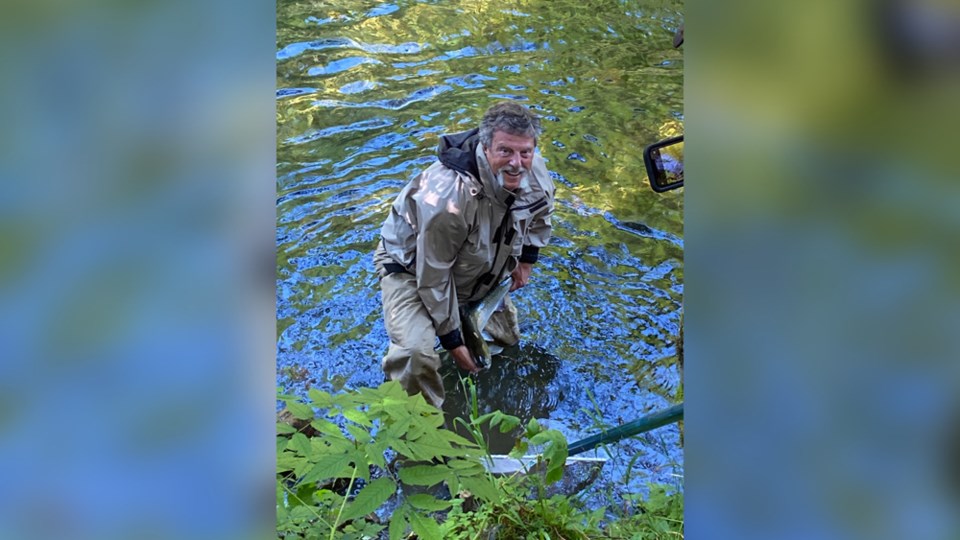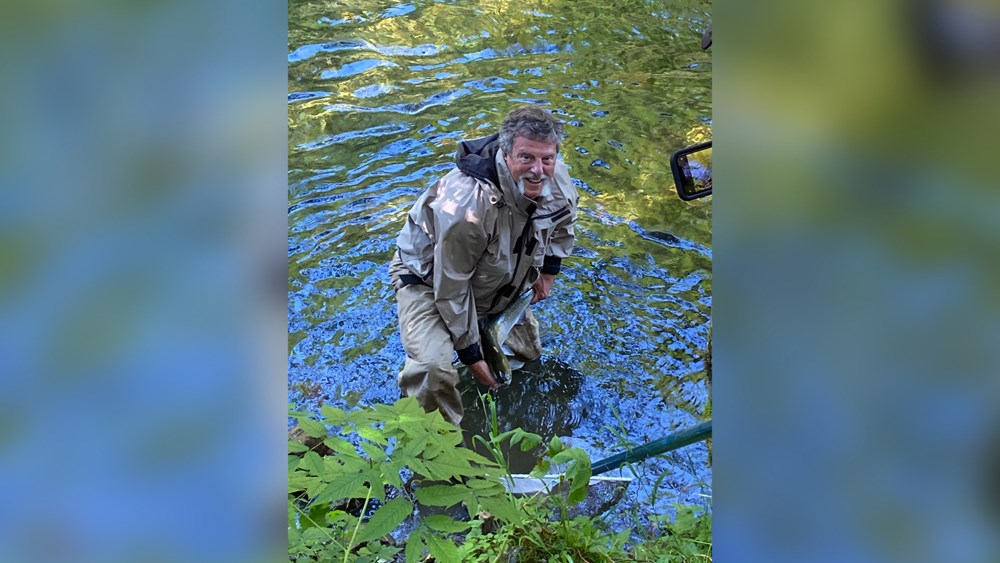Dogbreath
Well-Known Member

Seymour Salmonid Society president Shaun Hollingsworth releases a mature steelhead trout into Seymour Lake, August 2022.
The move bodes well for a species of fish that haven't been able to return to their traditional waters since the first dam was built 95 years ago.
For the first time since the 1920s, there are wild steelhead trout preparing to spawn in Seymour Lake.
Two weeks ago, Seymour Salmonid Society volunteers and Metro Vancouver staff released 10 pairs of mature wild steelhead into the reservoir above the Seymour River Dam in hopes of re-establishing a healthy run, something that hasn’t been done since the first dam was built in 1927.
“This is great news,” said Shaun Hollingsworth, president of the Seymour Salmonid Society. “It’s coming up to 100 years since fish have been able to spawn naturally up there. … It’s pristine. It’s beautiful country up there.”
Metro and the salmonid society started a similar program for wild coho salmon in the Seymour River watershed in 2019 but, until this year, steelhead returns have been so low, any trout that salmonid society volunteers have caught have been used for brood stock at the Seymour River Hatchery.
This December, the steelhead will spawn, with each pair producing up to 6,000 fry, Hollingsworth said. They will spend the next two years in Seymour Lake maturing and preparing for life in the ocean. Unlike on the Cleveland Dam on the Capilano River, fish can survive coming over the smaller Seymour Dam’s spillway.
Steelhead return to their home tributaries to spawn after four years and then go back to the ocean, repeating the process annually up the three more times before they reach the ends of their lives. Hollingsworth said they are hoping to see a successful return rate of between two and eight per cent.
But, the ones that do survive and come back will likely be stronger than the generation that spawned them, said Jesse Montgomery, acting director of watersheds and environment for Metro Vancouver.
“Typically, you’ll end up with a more resilient subset of fish that are reared in wild conditions as opposed to hatchery conditions,” he said. “Wild fish have a number of attributes that hatchery fish don’t necessarily have. Survival of the fittest, and avoiding predators and sourcing their own food and chasing after it. You get some good, strong genetics and hopefully better returns with some wild fish.”
Even with the fish doing their thing in the water supply, it’s no threat to us, Montgomery assured.
“There are no water quality concerns,” he said.
Since 2016, the salmonid society has been working on a project to slowly break apart the tens of thousands of cubic metres of rock that broke off from the canyon wall and slid into the river in 2014, making it impassible for returning fish. Engineers are now preparing to sign off on the project.
With that massive undertaking now largely complete, and generations of wild salmonids beginning to take their place in the watershed again, Hollingsworth said his group is turning their attention to the Seymour River estuary where they hope to make more habitat improvements.
“If you’re not moving forward, you’re sliding backward,” he said. “It’s an exciting river watershed to be working on because it’s so natural, yet right in the middle of a large metropolitan area.”
Hollingsworth said the salmonid society is eager to show off their good work at an open house at the hatchery scheduled for Sept. 18.

Wild steelhead run re-established above Seymour River dam
The move bodes well for a species of fish that haven't been able to return to their traditional waters since the first dam was built 95 years ago.
 www.nsnews.com
www.nsnews.com
